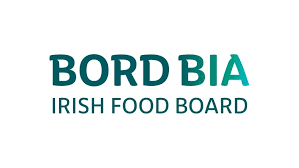Ireland’s Lamb Market: Insights on Trade & Prices
Quotes
Base quotes from major processors have seen a slight improvement this week, ranging from €9.00/kg to €9.40/kg for well-finished lambs, with an additional QA bonus available. With increased demand, many major processors have raised the carcass weight limit to 24kg.
Supply and Demand
The relatively tight supply of lambs, coupled with stable demand from both domestic and export markets, has contributed to the firming of the trade throughout 2024. This trend is also evident in other key lamb-producing regions in Europe and the UK. According to the latest Eurostat figures, there has been a contraction in breeding flock numbers in many regions. In Ireland, the ewe flock decreased by 3.7% in the December 2023 census compared to December 2022, a decline of 107,000 head, which has further tightened supplies.
Prices
The reported deadweight price for the week ending January 12th increased by 31% to €8.75/kg, reflecting the ongoing improvement in quoted prices from major lamb processors. In the same week in 2024, the reported deadweight price was €6.62/kg. The deadweight trade has also improved across UK regions. Last week, reported lamb prices in mainland GB were equivalent to €8.29/kg, a decrease of 4c/kg, while in Northern Ireland, there was a notable improvement to €7.95/kg, a decrease of 17c/kg.
The relatively tight supply of lambs for slaughter in Northern Ireland, combined with competition from the live export trade to both mainland GB and ROI, has contributed to this firming of the trade.
Southern Hemisphere Prices
Prices in the Southern Hemisphere remain well below European levels but have improved significantly over the past few weeks, narrowing the price differential with the EU. With a lead time on product shipments, this recent improvement in deadweight prices is expected to impact their competitiveness in EU markets in the medium to long term. This week, prices saw a slight increase to €5.99/kg in Australia and €4.38/kg in New Zealand.
Throughput
There was a decrease in the total sheep kill in DAFM-approved plants last week to 34,008 head, compared to 57,313 in the same week in 2024. Tighter supplies have been a feature of the 2024 lamb season so far, with a smaller lamb crop, difficult lambing conditions, and changeable grass growing conditions all impacting lamb availability for processing. Total year-to-date slaughter is down 32% compared to 2024, totaling 70,274 head.
